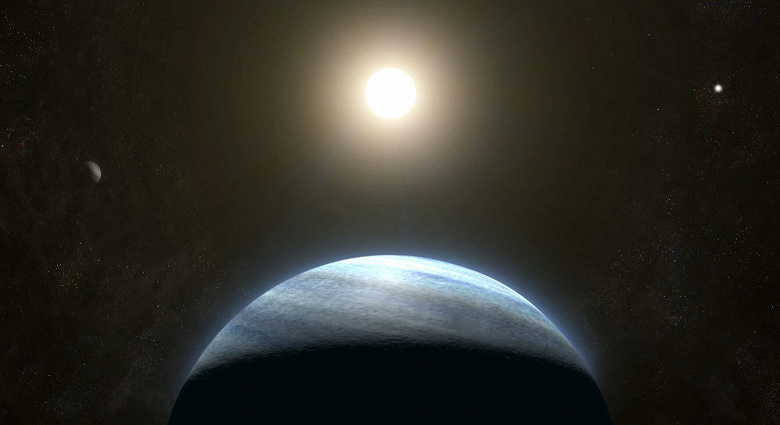Newly discovered planet may have a satellite with a rocky surface
A team of astronomers and science enthusiasts has discovered an exoplanet in the habitable zone of a star system that includes two stars and likely another exoplanet.
Planet hunters spotted a planet similar in size to Neptune as it passed in front of one of the system's stars, temporarily dimming its light, similar to a solar eclipse on Earth. This transit method typically identifies planets with relatively narrow orbits because they are more likely to follow trajectories that place them between Earth and their parent star. By crossing such paths, they often find themselves in positions that block starlight. That is why the discovered planet is considered unusually distant — it takes 272 days to complete one orbit around its star.
This star is currently the brightest known to have a transiting exoplanet in its habitable zone — areas where liquid water could potentially exist.
Subsequent observations of the system revealed even more interesting features. In addition to the discovered planet, the star is likely to be orbited by a second, as yet unconfirmed exoplanet with a 34-day orbital period. And what is even more exciting— There is another star in the system. This configuration provides valuable data for scientists trying to understand how planets form and remain in stable orbits in multi-star systems.
«The discovery of planets in multi-star systems is critical to our understanding of how so many different planets can be created from the same material» , — notes Nora Eisner, lead author of the study and a researcher at the Center for Computational Astrophysics at the Flatiron Institute in New York.
Systems of stars and planets are formed from clouds of gas and dust that begin to stick together under the influence of gravity. When a forming star is close to another, a gravitational connection can form between them and they will become a binary star system. Since such systems are estimated to be half as likely to form planets as single stars, Eisner noted, “It’s very exciting that we’ve discovered this planet.” ;nbsp;.
The new planet, officially named TOI 4633 c, but unofficially christened « Percival» (after a character from the Harry Potter books), was first spotted by citizen scientists analyzing data from NASA's TESS space telescope, designed to search for transiting exoplanets. The Planet Hunters TESS program allows anyone with a computer and Internet access to participate in the search for undiscovered planets in the huge TESS data sets.

After 15 enthusiasts noted a possible transit signal, Nora Eisner's team decided to study the system in more detail. Subsequent measurements of the star's radial velocities, which detected tiny fluctuations in its motion caused by the gravitational pull of the planets, indicated the potential presence of a second, closer exoplanet.
Further analysis of the images and archival data revealed that what was initially thought to be a single star was actually a pair of closely spaced stars. The two stars share a common orbit so close to each other that, from the perspective of an observer on Earth, they cannot be distinguished individually. However, archival observations covering the last 119 years have confirmed that the system is a pair of double stars.
The newly discovered exoplanet has the second longest known orbit of all planets discovered using TESS data, and is one of the five exoplanets with orbital periods exceeding 100 days.
Although the planet is located in the habitable zone, it is hardly worth considering it as a place for future space travel. TOI 4633 c has no solid surface, and its atmosphere is likely rich in water vapor, hydrogen and methane. However, previous studies have shown that long-period exoplanets are highly likely to have satellites or moons, which in some cases may have solid surfaces suitable for the origin of life.
«If this planet had a moon, it would most likely have a solid surface, which would be an excellent place to search for water», — says Eisner. In the future, the exoplanet may be the target of exomoon detection campaigns, given the brightness of the parent system and the planet's elongated orbit – factors favorable to the search for satellites.
Although scientists are eager to learn more details about the system, it will be at least 30 years before the two stars are separated enough in space to determine which planets orbit them. Confirming that planets orbit the same or different stars could help improve our understanding of the long-term stability of such systems.
This may also contribute to more accurate predictions of the discovery of new exoplanets — Almost half of all Sun-like stars are part of multi-star systems.

